above: Silver-spotted Skipper at Warren Hill © Phillip Delve
Leader Phillip Delve
Following a very stormy week, 12 of us met just south of Perham Down near Tidworth, hoping to see butterflies. Conditions were not ideal, with persistent cloud cover and a cool breeze, but at least it was dry with some sunny intervals early afternoon. Well vegetated chalk downland spread out before us to the south, the gentle slope up to Warren Hill in the distance and a large meadow close by, with woodland each side. Flying in the distance were several Red Kites, Kestrels, a Buzzard and a few Swifts.
Our party quickly spread across the meadow, knee deep in flowers: Red Bartsia, Wild Parsnip, Bird’s-foot trefoil, Agrimony, Self Heal, Wild Basil, Viper’s bugloss, Lady’s bedstraw, Yellow Rattle, Ragwort.
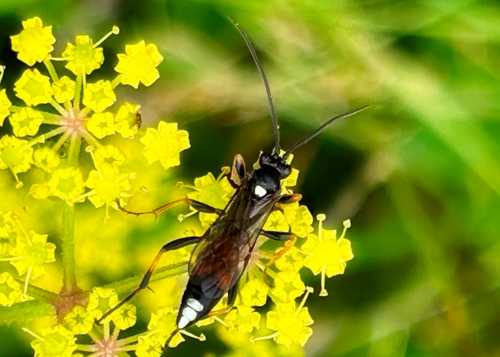
White-tipped Darwin Wasp Ichneuman albiger at Warren Hill © Karen Funnel
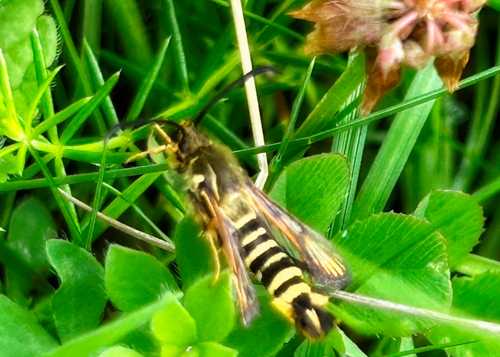
Six-belted Clearwing at Warren Hill © Karren Funnel
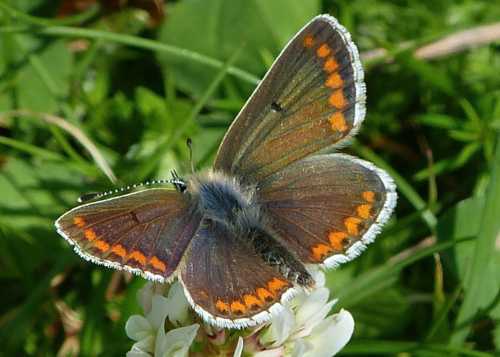
Brown Argus at Warren Hill © Phillip Delve
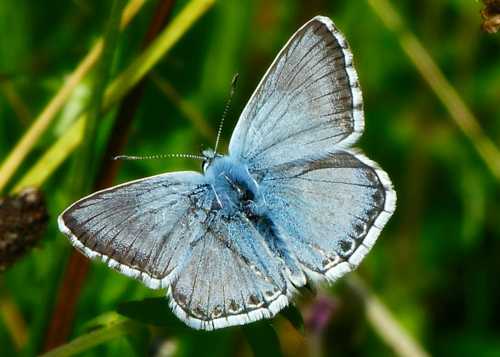
Chalkhill Blue at Warren Hill © Phillip Delve
Here we began to see butterflies and other insects: Meadow Brown, Common Blue, Green-veined White, Dark Green Fritillary, Chalkhill Blue, Brown Argus, Essex Skippers; Silver “Y” moths; Meadow Grasshopper, Long-winged cone-head Crickets. Karen Funnel photographed a Six-belted clearwing moth and a White-tipped Darwin Wasp Ichneuman albiger. Towards hedges of Blackthorn and Hawthorn were Gatekeeper and Holly Blue butterflies.
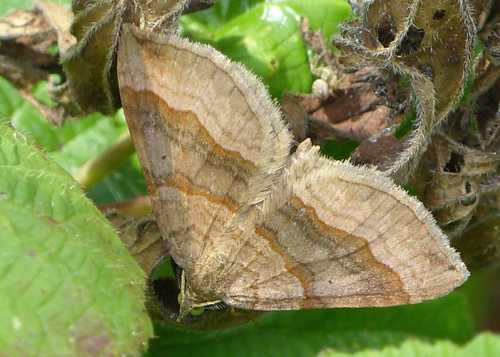
Shaded Broad-bar at Warren Hill © Phillip Delve
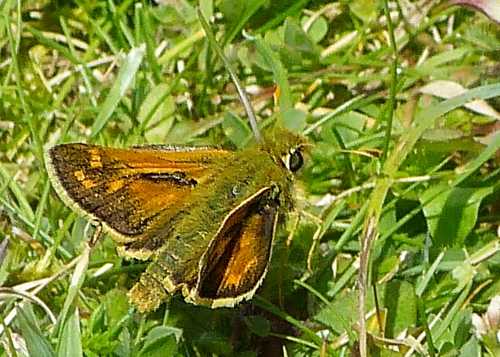
Silver-spotted Skipper at Warren Hill © Phillip Delve
On the lower slopes of Warren Hill, to the lea of Guelder Rose bushes (viburnum opulus), we found a Shaded Broad-bar moth and another Chalkhill blue butterfly. Then Glen Maddison found the first of several Silver-spotted skippers. These very fast flying butterflies proved very elusive, until a few shafts of sunlight made locating them easier. Eventually, when every one had seen this target species, we headed back to our cars for lunch.
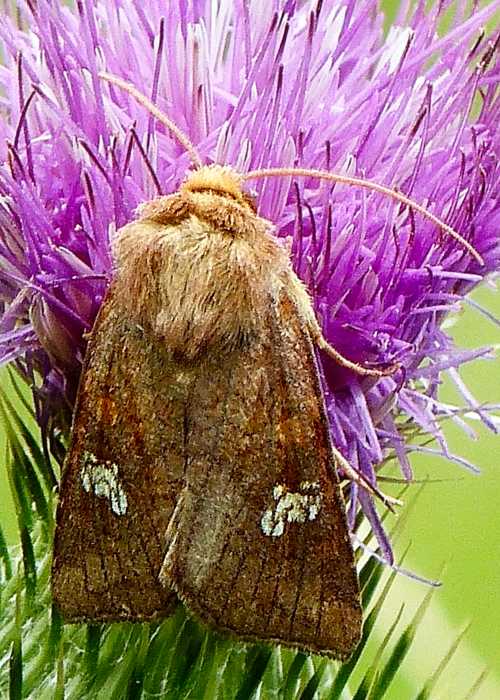
Ear Moth at Warren Hill © Phillip Delve
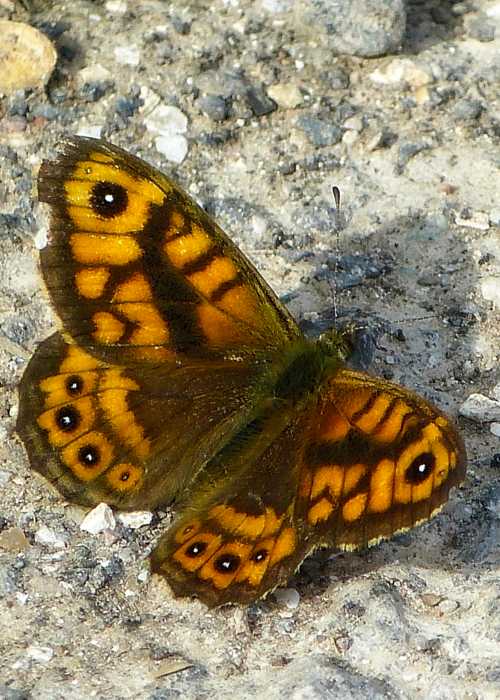
Wall Brown © Phillip Delve
While we were eating our sandwiches, a party of House Martins flew over. A Small Heath butterfly and Common Carpet moth were seen. Glen Maddison then found an Ear Moth, a new species for most of us.
Following lunch, we drove approx 3 miles to an MOD site north west of Sutton Bellinger. Here extensive blackthorn shelter belts grow on chalk grassland.
We spent some time walking where wild flowers edges and bramble bushes grow, close to the blackthorn hedges, knowing these provided nectar for butterflies.
Butterflies seen included Silver-washed Fritillary, Holy blue, Comma, Peacock, Red Admiral, Wall Brown. Finally our guest Mike Peacock spotted not one, but two male Brown Hairstreaks! The first was on a ripe blackberry, high on a bramble bush, the second at knee level, seeking nectar.
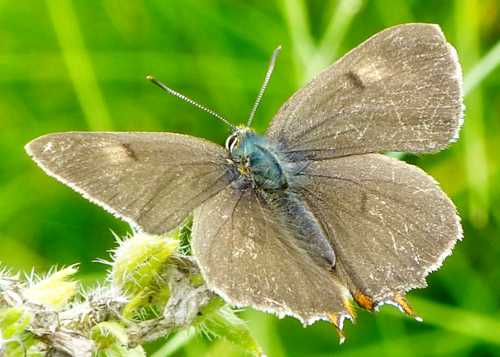
Brown Hairstreak near Shipton Bellenger © Phillip Delve
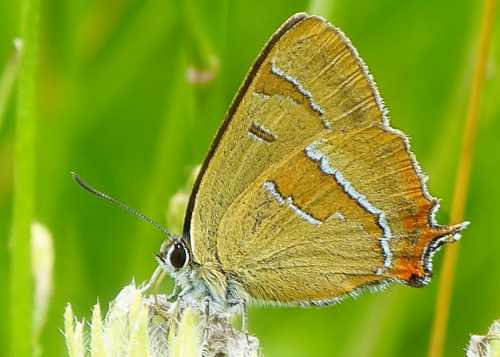
Brown Hairstreak at Shipton Bellenger © Phillip Delve
Between us we recorded 23 species of butterfly over the two sites, as well as a couple of very interesting moths. All in all a great day out.
Phillip Delve

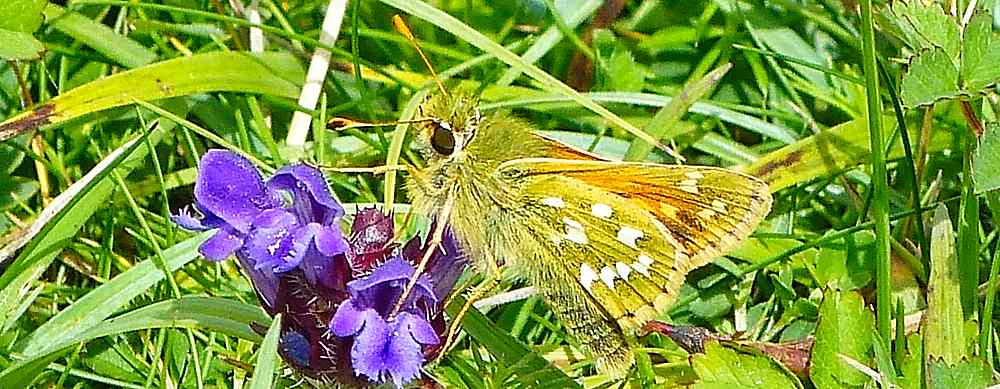
Recent Comments